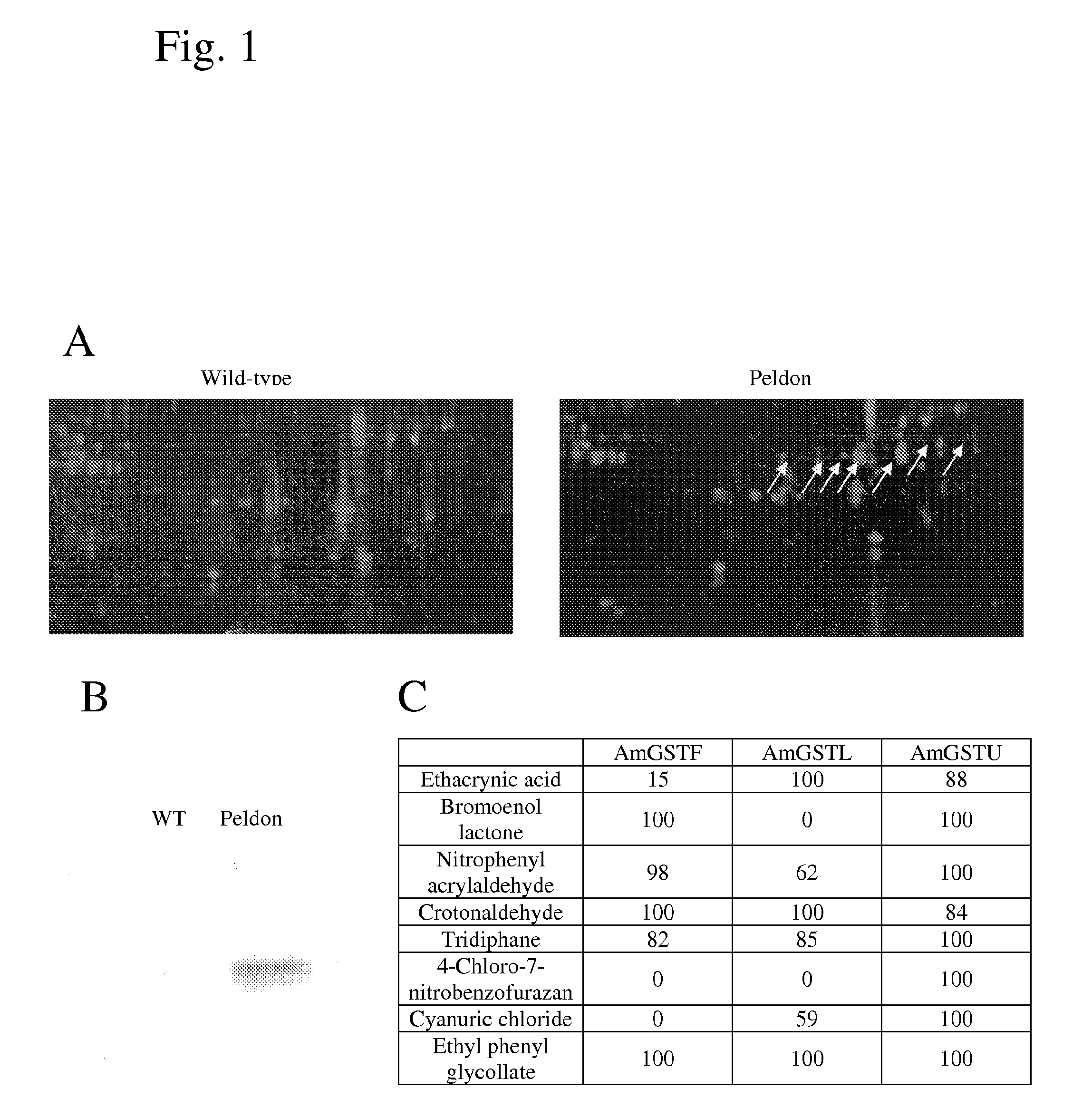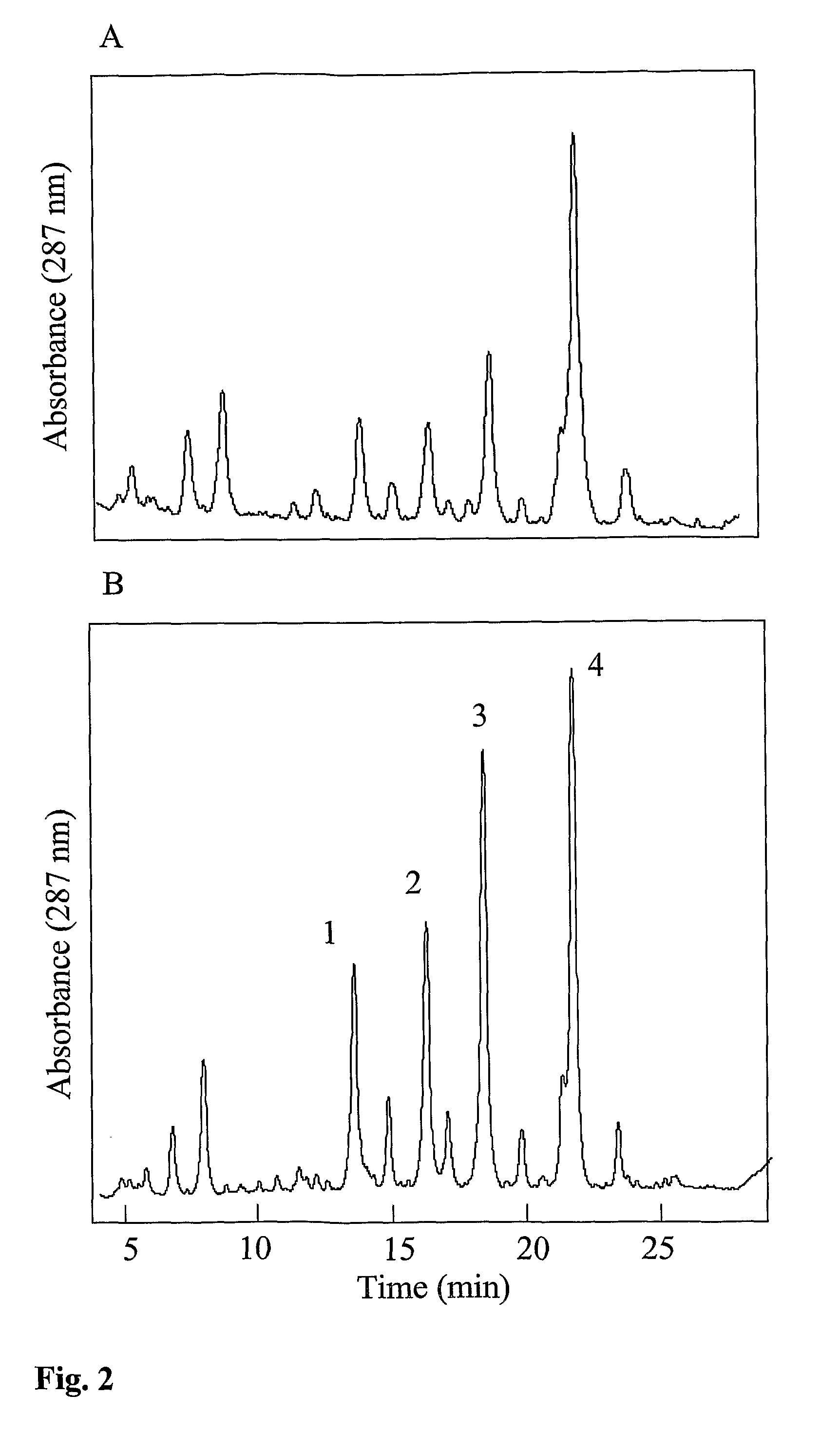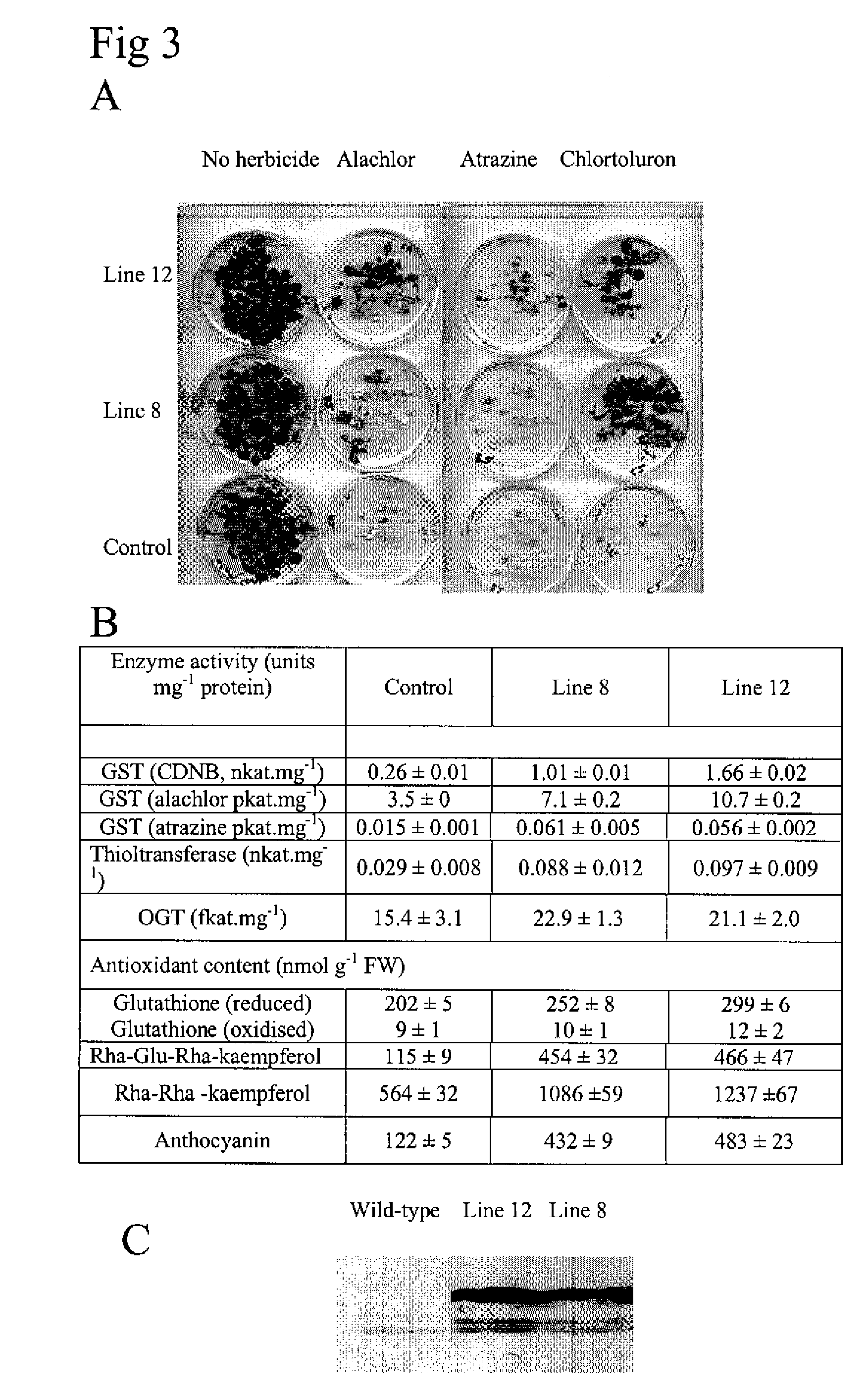Method and Means Relating to Multiple Herbicide Resistance in Plants
a technology of herbicide resistance and methods, applied in the direction of biocide, plant growth regulators, biochemical apparatus and processes, etc., can solve the problems of increasing the resistance trait in the field, increasing the gst activity, and affecting crop yield and quality, so as to reduce the gst activity
- Summary
- Abstract
- Description
- Claims
- Application Information
AI Technical Summary
Benefits of technology
Problems solved by technology
Method used
Image
Examples
Embodiment Construction
[0211]There now follow non-limiting examples and figures illustrating the invention.
LEGEND TO FIGURES
[0212]FIG. 1 GSTs in MHR black-grass. (A) 2D-gel electrophoresis of hydrophobic protein fraction from WT and Peldon plants, with polypeptides corresponding to AmGSTF1 arrowed. (B) Western blot of extracts from WT and Peldon plants using an anti-GSTL-serum (C) The effect of 0.1 mM inhibitors on the activity of recombinant black-grass AmGSTF1-1 (100%=640 nkat.mg−1 protein), AmGSTL (100%=83 nkat.mg−1), AmGSTU1 (100%=685 nkat.mg−1) with activities determined using the assays described in table 1.
[0213]FIG. 2 HPLC analysis of flavonoid metabolites in the foliage of Arabidopsis (A) WT plants and (B) Amgstfl over-expressors (line 12). Flavonoids showing altered accumulation were identified by HPLC-MS with reference to published data (S17). Compound 1=Kaempferol-7-O-[rhamnosyl-glucosyl-rhamnoside] (M−H)−=739; compound 2=cyanidin-3-O-[2-0(2-O-(sinapoyl)-xylosyl)-6-O-(4-O-(β-D-glucosyl)-p-coum...
PUM
 Login to View More
Login to View More Abstract
Description
Claims
Application Information
 Login to View More
Login to View More - R&D
- Intellectual Property
- Life Sciences
- Materials
- Tech Scout
- Unparalleled Data Quality
- Higher Quality Content
- 60% Fewer Hallucinations
Browse by: Latest US Patents, China's latest patents, Technical Efficacy Thesaurus, Application Domain, Technology Topic, Popular Technical Reports.
© 2025 PatSnap. All rights reserved.Legal|Privacy policy|Modern Slavery Act Transparency Statement|Sitemap|About US| Contact US: help@patsnap.com



